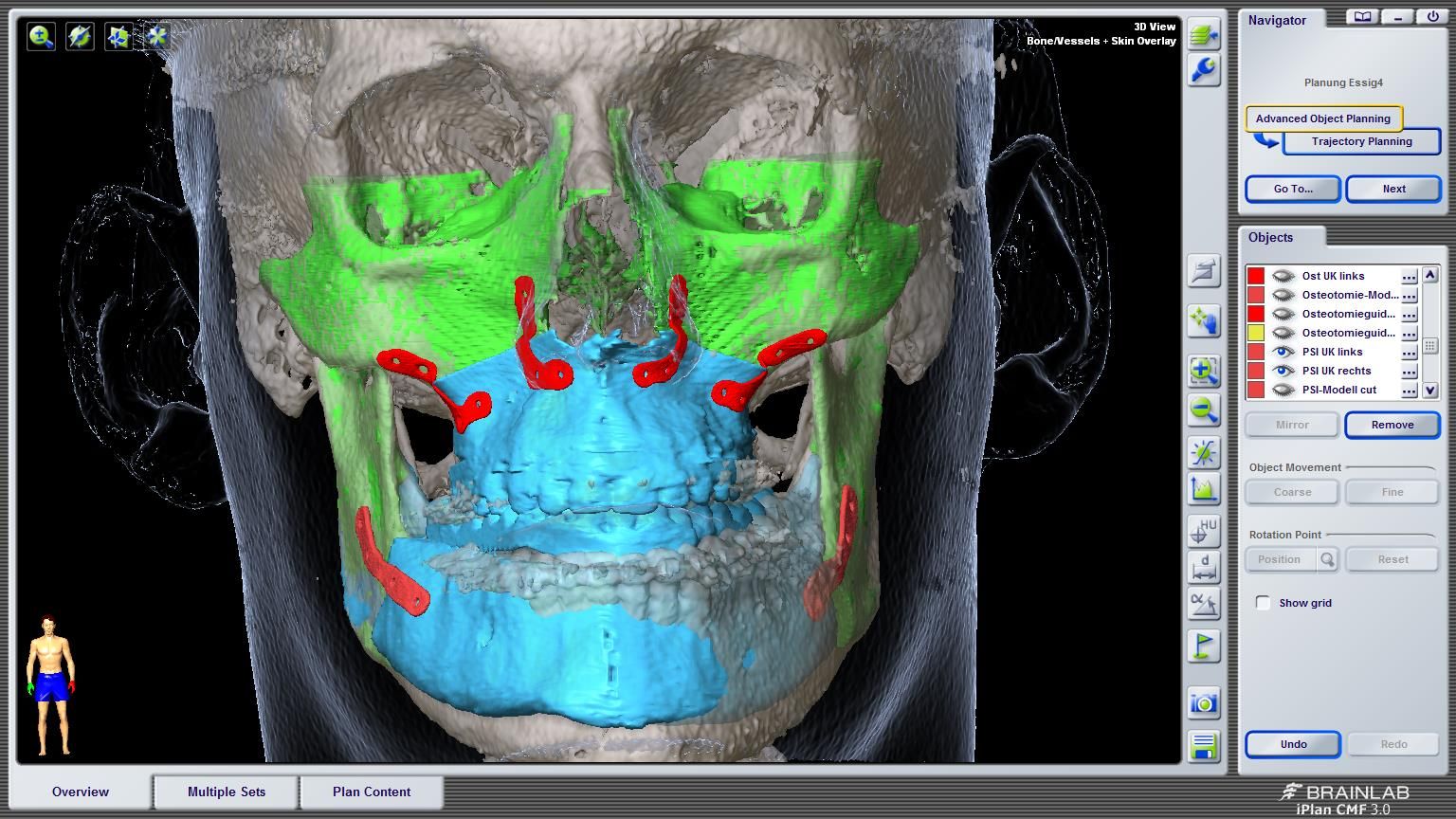Treatment through surgery
While isolated tooth misalignments can usually be successfully treated without surgery by means of orthodontic therapy, misalignments of the jaws in relation to each other can only be influenced to a very limited extent by purely orthodontic therapy. In this case, orthodontic surgery is available through the repositioning of the upper and/or lower jaw by an oral and maxillofacial surgeon. However, since jaw misalignments are practically never accompanied by misaligned teeth, joint orthodontic and oral surgery treatment planning is usually necessary. Orthodontic pre-treatment is usually followed by orthodontic surgery to correct the misaligned jaw (corrective osteotomy) and is then completed with orthodontic fine adjustment of any remaining misaligned teeth. In the case of missing teeth, planning is also carried out on an interdisciplinary basis with the Clinic for Crown and Bridge Prosthetics. Jaw misalignment surgery can be performed by repositioning the upper and/or lower jaw. The correction of malocclusions can be made possible during this procedure by relocating tooth-bearing partial segments, but should be left to the orthodontic treatment partner as part of the causal division of tasks of a combined oral surgery-orthodontic treatment in order to avoid inadequate problems and risks. However, it is important to consider and maintain the position of the temporomandibular joint during operations to correct jaw misalignment in order to avoid complaints caused by overloading or incorrect loading of the temporomandibular joints. With our computer-assisted technique, the patient-specific position of the joint-bearing parts of the lower jaw is ensured – a major advantage compared to conventional purely tooth-supported transfer of the surgical planning.

Planning of the mandibular repositioning osteotomy (jaw sections in green remain unchanged) and use of patient-specific osteosynthesis plates (red) for exact repositioning of the tooth-bearing upper and lower jaw sections.
The use of patient-specific osteosynthesis plates is the key to success.

